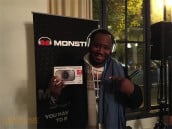Find Our Latest Video Reviews on YouTube!
If you want to stay on top of all of our video reviews of the latest tech, be sure to check out and subscribe to the Gear Live YouTube channel, hosted by Andru Edwards! It’s free!
Latest Gear Live Videos
Apple iPad 2 hands-on

Posted by Andru Edwards Categories: Apple, Editorial, Features, Handhelds, Videos,
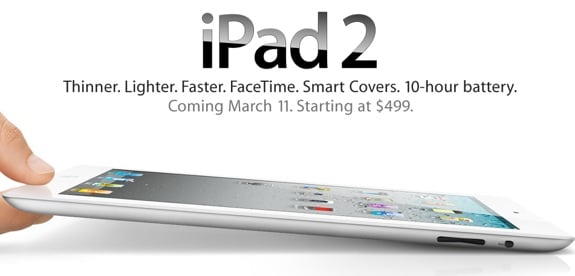
No, the Apple iPad 2 is not a game changer. Instead it simply, firmly establishes Apple once again as the front-runner in the tablet wars. Apple and chief executive Steve Jobs (who made an appearance and received a standing ovation) focused on all the right areas to ensure that the Apple iPad will remain the tablet you have to rule out before you buy any others.
As I predicted, Apple added not one, but two cameras. This makes perfect sense, though I was not particularly happy to hear an Apple exec say on stage that the iPad is perfectly suited for these cameras and FaceTime. Why couldn't the first-generation iPad, which I own, also have been considered perfect for at least one camera? Apple didn't say anything about the resolution on the cameras, though we know the rear one can capture 720P, more or less - the Apple definition for "High Definition." Please, no one tell Steve Jobs that someone on the iPad team sneaked by an accessory that outputs full 1080p from the device (more on that later).
Click to continue reading Apple iPad 2 hands-on
Gallery: Apple iPad 2 hands-on
Advertisement
Here’s why iPad 2 didn’t get a Retina Display

Posted by Andru Edwards Categories: Apple, Displays, Editorial, Features, Handhelds,
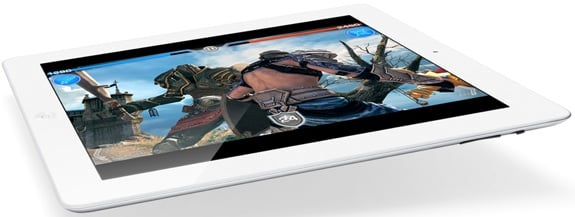
In the lead-up to the iPad 2 announcement, many were predicting that Apple would give the tablet's 9.7-inch screen a bump in resolution. But when Steve Jobs revealed the second-generation iPad to the world, it had the same pixel count as the first one: 1,024x768, even though the display was revamped to be considerably thinner. Why no extra pixels?
Looking at the history of the display on the iPhone offers some clues. Apple kept the display of the iPhone at the same 480x320-pixel resolution for the first three versions of the phone, and when it finally upgraded the display for the iPhone 4, the bump was huge, doubling the display resolution to 960x640 pixels. The upgrade also introduced the term "retina display," a piece of marketing jargon that Apple doesn't quantify, but generally means a display that is better than the limits of human vision.
Click to continue reading Here’s why iPad 2 didn’t get a Retina Display
Gallery: Here’s why iPad 2 didn’t get a Retina Display
How Google can learn from the iPad 2

Posted by Andru Edwards Categories: Apple, Editorial, Features, Google, Handhelds, Software,
Apple's March 2 event is all but guaranteed to bring us the iPad 2, most likely with dual cameras and a revamped OS. It arrives two months after CES 2011, to a landscape littered with tablets from scores of manufacturers, most of them with one thing in common: they are running Google's Android OS. But only a handful of them run Android 3.0 (Honeycomb), the first Android tablet OS. Can tablets like the Motorola Xoom—the first Honeycomb device—take on the iPad?
If the past is any indicator, it doesn't look good. This has less to do with quality of product, however, and more to do with the manner in which the product is brought to the public.
The clear advantage Apple has over just about every competitor—except perhaps for RIM—is that it relies on no external manufacturers for its products. To clarify: of course Apple needs to farm out production of the components that make up its devices to OEMs, but when you see a new iPad, it is from Apple, running an Apple OS, for sale at the Apple store. The closest Apple comes to working with other companies is its partnerships with Verizon and AT&T for the iPhone and iPad. For the most part, however, Apple is its own, self-controlling entity. With no company—other than the carriers and OEMs— with which to coordinate, Apple can create a realistic product release timeline and stick to it.
Click to continue reading How Google can learn from the iPad 2
Gallery: How Google can learn from the iPad 2
10 features we’d love to see in the next iPad

Posted by Andru Edwards Categories: Apple, Editorial, Features, Handhelds,
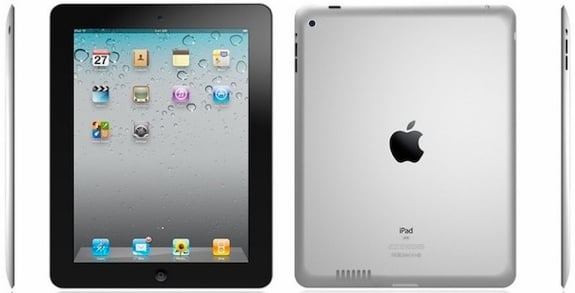
It's been a year since Apple took the wraps off its first tablet. In those past 12 months, the iPad hasn't had too much serious competition, and has easily dominated the tablet market. But with the recent introduction of Google's tablet-specific Honeycomb Android OS on devices like the Motorola Xoom, the tablet space is finally starting to get interesting.
And while other companies like HP, Motorola, and RIM are releasing first-generation tablets, Apple is set to unveil its second-gen iPad tomorrow. The invites have been sent, and the blogosphere is bursting with all sorts of ideas about what the 'iPad 2' might look like. But as anyone who follows Apple knows, nothing is certain until it's unveiled on stage in San Francisco. Here are 11 ways Apple could knock it out of the park with its next iPad:
Add a Verizon 3G iPad
The fact that Verizon started selling the Wi-Fi-Only iPad with a Mi-Fi bundle back in October, and since the iPhone 4 landed at Verizon last month, we can't see a reason why the next iPad wouldn't be available on both AT&T and Verizon. There could be an existing exclusivity agreement where AT&T would get the iPad 2 first, and then Verizon would follow sometime later, but my fingers are crossed that this won't happen.
Even Better, Make it a 4G Verizon iPad
Verizon's 4G network has been up and running since December, and the first LTE phones are expected any day now. Also, if you buy a Motorola Xoom, it comes with the promise of a free future 4G upgrade. Why not the iPad 2? Hopefully, the accompanying data plan wouldn't be prohibitively expensive.
Click to continue reading 10 features we’d love to see in the next iPad
Gallery: 10 features we’d love to see in the next iPad
Are the Steve Jobs death watch fears unwarranted?

Posted by Andru Edwards Categories: Apple, Editorial, Features, Rumors,
 A story broke late yesterday about Steve Jobs being seen attending the Stanford Cancer Center in Palo Alto, California, the same center where actor Patrick Swayze sought treatment before his death. The source: The National Enquirer.
A story broke late yesterday about Steve Jobs being seen attending the Stanford Cancer Center in Palo Alto, California, the same center where actor Patrick Swayze sought treatment before his death. The source: The National Enquirer.
Given the source, the claim is questionable, though the Enquirer has been right about matters surrounding secretive public figures before (as former presidential candidate John Edwards can attest). Radar Online says it has confirmed the story, but it didn't say how.
Given that we know Jobs is currently on medical leave from Apple, and that he's had cancer before, the report that Jobs may be seeking treatment at a cancer center isn't surprising. The Enquirer even has photos of what it says is Jobs, supposedly looking extremely thin. A few sites have posted some of the photos, though it's hard to tell how thin the person is, or if he's just wearing baggy clothing.
The Enquirer report takes some big leaps, however, on the scant evidence. Enlisting two doctors, who have never even met Jobs, to make a diagnosis based on what's in the photos, the Enquirer says Jobs may have lost large portion of his muscle mass and probably has just "weeks to live."
Click to continue reading Are the Steve Jobs death watch fears unwarranted?
Gallery: Are the Steve Jobs death watch fears unwarranted?
The Verizon iPhone: 10 things you should know

Posted by Andru Edwards Categories: Apple, Editorial, Features, Handhelds,
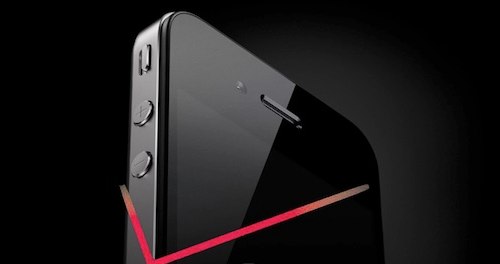
The arrival of the Verizon iPhone 4 has been cause for some celebration among Verizon customers and even some who are already using the phone on AT&T. In fact, virtually every smartphone customer is likely wondering if they should adopt one of the leading smartphones on the U.S.'s most reliable mobile network. These 12 facts may help you decide.
1. The Verizon iPhone is No Thicker or Heavier than the AT&T Model
Apple told me and my examination proves that these phones are like twins (more identical than fraternal). Both iPhones are 9.3 millimeters thick—still among the thinnest smartphones on the market.
2. The Antenna Design is Different for a Reason
It's no accident that the AT&T iPhone 4 and Verizon iPhone 4 antenna bands (around the phones) do not look exactly the same. The differences are hard to notice unless you hold the two phones side-by-side—as I did. The Verizon iPhone uses a CDMA network antenna. In fact, it uses two CDMA antennas (a necessary redundancy for the CDMA network). As a result, there are identical antenna band bar breaks on either side of the phone. By the way, Apple told me that, unlike GSM, the CDMA network actually works to give you a few more seconds of connectivity before the call breaks off completely. In other words, even on the worst connections, you may still be able to recover the call. I never had a bad enough connection to see this in action.
Click to continue reading The Verizon iPhone: 10 things you should know
Gallery: The Verizon iPhone: 10 things you should know
The future of Apple’s NFC mobile payment strategy

Posted by Reza Malayeri Categories: Apple, Smartphones, Editorial, Rumors,
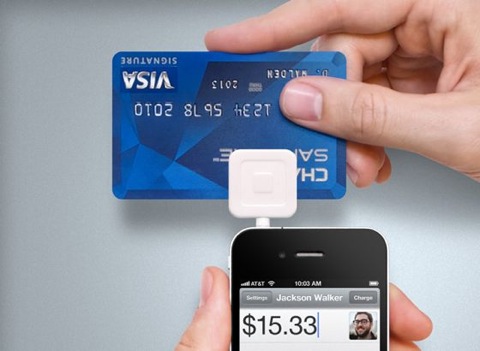
There is no question that mobile phone payments are very popular, and that many of us can operate our entire financial lives from our mobile phones. Apps from PayPal, and Square can turn our iPhones into portable financial centers, allowing us to exchange money quickly and easily. These new applications are creating opportunities and benefits that will shape the future of mobile payments.
Predictions about the iPhone 5 and the iPad 2 are beginning to heat up, and much of the talk has been about the implementation of NFC (near field communication) technology. What we haven't heard about so far, is anything about native intergration of mobile payment solutions from Apple and Google.
Click to continue reading The future of Apple’s NFC mobile payment strategy
Gallery: The future of Apple’s NFC mobile payment strategy
Will the US get an Internet Kill Switch like Egypt?

Posted by Andru Edwards Categories: Editorial, Internet,

With reports of Egypt's government completing shutting down the Internet in the country, talk about an "Internet kill switch" bill in the U.S. has reemerged. Could it happen here?
The bill in question is the Protecting Cyberspace as a National Asset Act of 2010, a cyber-security measure introduced in June by Sen. Joseph Lieberman. It was an over-arching cyber-security measure that, among other things, would create an office of cyberspace policy within the White House and a new cyber-security center within the Homeland Security Department.
A provision that got the most attention, however, was one that gave the president the power to "authorize emergency measures to protect the nation's most critical infrastructure if a cyber vulnerability is being exploited or is about to be exploited."
Some interpreted that to mean that the president would have the authority to shut off the Internet at random. Lieberman refuted the "Internet kill switch" assertion as "misinformation" during an appearance on CNN, and the Homeland Security and Governmental Affairs Committee, which he chairs, later published a "myth vs. reality" fact sheet on the bill.
Click to continue reading Will the US get an Internet Kill Switch like Egypt?
Gallery: Will the US get an Internet Kill Switch like Egypt?
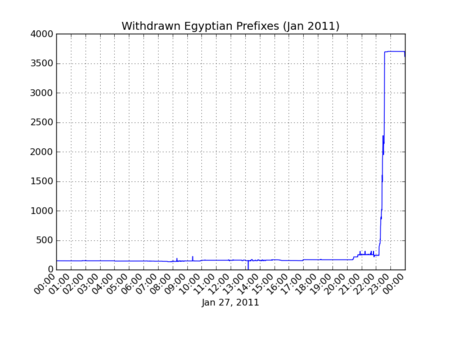
As the violence and protests develop in Egypt, Renesys, an Internet research firm, published a fascinating overview of what happened to the country's Internet connections. At 22:34 UTC, all the entry points into the country were cut in a matter of minutes. The four major Internet providers in Egypt were ordered to cut all links, by removing the 3,500 routes that packets could take, leading to no valid path for the traffic to reach any addresses inside of the country, save for one small network. Almost a day later, they estimate that around 93% of traffic is still cut off.
Unlike earlier protests in Tunisia and other countries, where governments tried unsuccessfully to block invidual sites like Twitter and Facebook, people still finding ways around the blocks through proxies, this time the complete isolation from the global Internet was an unprecedented event. It's still not known what will happen to the economy of the country if these measures stay for longer than a few days.
Read More  | Renesys
| Renesys
Gallery: The Egypt Internet blackout
Why American students fail in science

Posted by Andru Edwards Categories: Editorial, Google, Microsoft, Science,
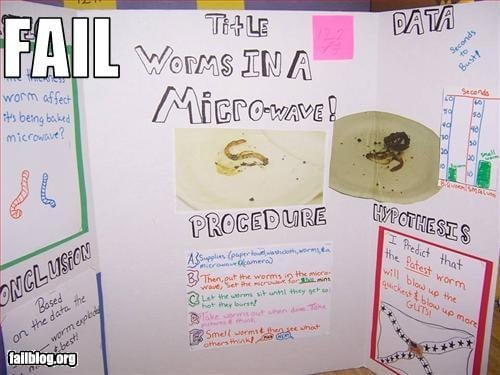
There is going to be a lot of debate over the fact that American students are again falling behind in their education. According to National Assessment of Educational Progress, American children are nothing less than pathetic when it comes to understanding science.
This whole mess will be blamed on all sorts of things, probably all valid. But who, besides me, is going to blame the computer? Has anyone noticed that ever since the computer was brought into the classroom, student test scores have been falling? Does anyone find this coincidence weird? After all, the computer is, in itself, a teaching machine, of sorts.
Over the years, I've seen a lot of quasi-teaching software and educational software companies come and go, but can you name one large or middle-sized software company that specializes in educational software for children in grade school now? Just try to name one.
The biggest software company in the world, Microsoft, used to have some educational software sold under its discontinued Home brand, but I have no idea what became of it. The company, along with the Gates Foundation, promotes the idea of computers in the classroom, but it seems more of a ploy to make kids comfortable using Windows than anything else.
For science education, the greatest thing a computer can do is to show scientific principals in a way no blackboard or discussion could ever do, with graphical representation and full motion animation. You'd think that with all the computers that have been installed in school that American kids would be wizards by now. But no.
Click to continue reading Why American students fail in science



